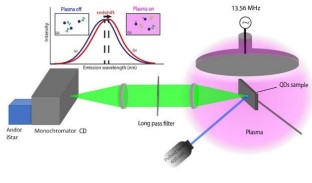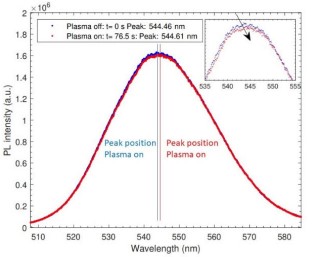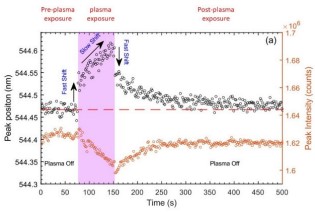Resources
 Part of the Oxford Instruments Group
Part of the Oxford Instruments Group
Expand
Collapse
 Part of the Oxford Instruments Group
Part of the Oxford Instruments Group
We are exploring the charging mechanisms of nanometer-sized particles embedded in ionized media – such as plasma - or deposited on plasma-facing surfaces. This is crucial for the further development of the theoretical framework of the plasma-nanoparticle interaction. Such charging processes are relatively well described for particles in the micrometer size range but the theory is lacking for particle sizes into the nanometer regime. The reason for this missing understanding is the lack of experimental methods for the measurement of plasma-delivered charge to individual particles. The latter is caused by the fact that most methods currently used to determine the charge on particles are based on optical measurements which suffer from signal-to-noise loss dramatically when the particle size decreases to values below that of the wavelength of the used light.
This application note describes measurements of (changing) photoluminescence spectra emitted by laser-excited and plasma-facing quantum dots (QDs) with the aim of exploring the charge that these QDs pick up from the plasma. For this, an iStar DH334T-18U-A3 from Andor Technology was fitted behind a high-resolution monochromator.
The principle experimental design is depicted in Figure 1.

Figure 1: Experimental design with a QD sample exposed to a plasma and irradiated with a 405 nm CW laser for excitation. The light emitted by the QDs is focused by a lens-system on the entrance of a monochromator and consequently imaged on an Andor iStar DH334T-18U-A3 camera. Picture adapted from [1].
In our experiments CdSe/ZnS core-shell QDs (core radius and shell thickness being 2.1 nm and 0.9 nm respectively) were drop-casted on a silicon substrate and exposed to a pulsed low pressure (4 Pa) capacitively coupled argon gas discharge. Before, during and after plasma exposure the QDs on the sample were excited by a 405 nm CW laser. In parallel, the photoluminescence (PL) signal, emitted by the (plasma charged) QDs, was collected by a lens system and imaged onto the 250 µm entrance slit of a Acton Research SpectraPro275 monochromator. An Andor iStar DH334T-18U-A3 was mounted behind the exit slit of this monochromator and recorded the QD emitted light spectrally as well as temporally resolved. By applying the QD excitation in a pulsed manner, background correction of the collected light was enabled. Overall, the achieved spectral and temporal resolutions of the full setup were 10 pm and 1.5 s respectively.

Figure 2: Typical photoluminescence spectrum emitted by the QDs before (blue) and during (red) plasma exposure. Picture adapted from [1].
Figure 2 shows a typical photoluminescence spectrum emitted by the QDs before (blue) and during (red, after 76.5 s) plasma exposure. From this figure, two distinct observations can be made:
1) the PL peak position seems to red-shift to larger wavelengths, and
2) the intensity of the peak somewhat decreases.
For each spectrum – measured at a certain time instant – the peak position as well as the peak intensity has been obtained by fitting the background corrected peak with an exponentially modified Gaussian fit function. The results are depicted in Figure 3 as a function of time before, during and after plasma exposure. As can be concluded from these graphs, the sensitivity of the camera (in combination with the other equipment used) is sufficient to detect these very small variations in peak-wavelength and peak intensity.

Figure 3: The experimentally found peak position (black) and peak intensity (orange) of the QDs’ emitted PL spectrum before, during and after 76.5 s of exposure to a low-pressure argon plasma. Picture adapted from [1].
Associated Professor Job Beckers
Department of Applied Physics
Eindhoven University of Technology
Postbus 513
5600 MB Eindhoven
E-Mail: j.beckers@tue.nl
Phone: +31 40 247 4043
References
[1] Z. Marvi et al. Accepted for publication
in Applied Physics Letters, 2021
https://www.tue.nl/en/research/research-groups/
elementary-processes-in-gas-discharges/complexionized-media/
[1] Z. Marvi et al. Accepted for publication in Applied Physics Letters, 2021
Date: Feb 2022
Author: Professor Job Beckers
Category: Application Note
